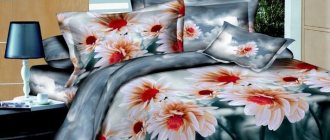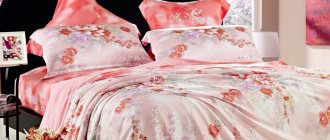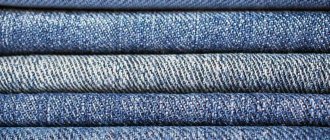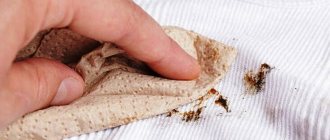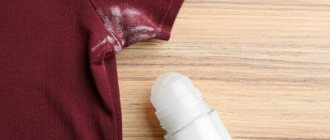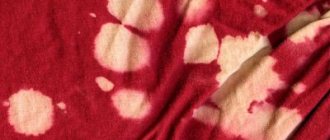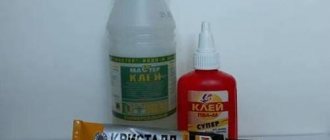A new item looks perfect, but after washing everything can change. Rolled fibers will appear on the fabric, which will ruin the appearance of the product and the mood of the owner.
Pellets are not always a sign of a low-quality product; the reason may be due to improper care and use. You can fix the problem if you have patience and take the advice of experienced housewives.
We'll tell you in this article how to remove pellets from bed linen, socks, sweatshirts and other things, and the ceiling in a car.
Methods
Machine for cleaning products from pellets
Online stores offer a wide selection of machines for eliminating lumps that have appeared. The cost of the devices is affordable, it is no more expensive than a regular clothes brush. Pros: battery operated; The charge is enough to clean several things; compactness of the machine. There are a number of large machines that operate on mains or battery power.
Well-known models from different manufacturers:
- Bomann MC 701 CB (3240)
- Polaris PLR 2022
- Smile MC 3102
- Clatronic MC 3240
Standard equipment of the device: grille with a protective cover; device body equipped with a blade; container for collecting cut lint.
The machine (depending on the model and manufacturer) most often has one or several operating modes (for example, separate adjustment of the nozzle for delicate materials).
Important! Saw clippers are not suitable for fabrics with fluff and high pile. The lint gets wrapped around the screw of the device, making it difficult to operate. And material with large loops clings to the blades, especially if a person works carelessly with the device or presses too hard on the machine.
Pros: efficient, fast and high-quality cutting of pellets and subsequent assembly into a special compartment.
Disadvantages : the procedure for removing pellets when the batteries (battery) are dead becomes slower; Not recommended for high pile materials.
Upholstered furniture adds coziness to our apartment, it is very convenient and comfortable, but it has a certain drawback - like knitted sweaters, some types of fabric upholstery suffer from peeling over time, and small, unsightly lumps of fabric form on it, stuck to the surface of the furniture.
Pellets are beaded fibers that form on a piece of fabric. Probably each of us has encountered such problems and observed them on clothes, carpets and furniture in the house. Pilling is normal and is not considered a fabric or manufacturer defect. However, they do not bring much pleasure to users. Why do these annoying little fabric fuzzes appear and how to deal with them?
Why do pellets appear?
Pilling occurs when loose fibers in the fabric come to the surface (this is a natural property of the fabric). Once on the surface, friction turns them into small balls - more commonly known as pellets.
Unfortunately, the pellets cannot simply be picked up and vacuumed up, as they curl up with the fibers still attached to the fabric and holding tightly. Also, why are some types of materials more prone to pilling ? The answer depends on two factors: the nature of the weave and the type of fiber. Smooth, tightly woven fabrics are less likely to pill because the fibers cannot easily escape to the surface.
And although it may seem that more durable artificial materials are less prone to pilling, this is not true. In fact, it's the other way around. Natural fabrics such as linen, cotton and wool shed loose fibers easily, making them less noticeable.
Artificial fabrics, such as polyester, nylon and low-quality acrylic, are stronger in their structure, but for this reason, the pellets are more securely attached to the surface.
Materials that are less likely to cause pilling
Natural fabrics:
- Cotton;
- Wool;
- Silk;
- Cashmere.
Artificial fabrics:
- Polyester;
- Acrylic;
- Nylon;
- Viscose;
- Spandex.
Unfortunately, the appearance of pellets is difficult to avoid. Most man-made fibers can be abraded. As a rule, they do not cause any particular inconvenience, but they do spoil the appearance of your furniture.
How to get rid of pellets?
Razor
To get rid of pellets , all you need is a new, sharp razor. Make sure the fabric is taut in the area you will be treating. Stay away from hard edges as they can easily cut through the fabric. Gently go over the pellets using short strokes in the direction of the grain. Once all the pellets have been removed, use a vacuum cleaner with an upholstery attachment to remove any remaining pellets. Scissors can be used in the same way. However, in any case, you need to be patient here - you need to take extra care not to damage the upholstery.
Penza and sandpaper
Sandpaper, like a razor, removes pellets. However, we recommend using fine sandpaper to ensure it does not damage the fabric. Plus, a pumice stone isn't just a tool for removing dry skin from your feet. Go over the pellets with a pumice stone, and then use masking tape to pick up the remains.
Machine to remove the pellets
The most effective way to remove pellets is a modern battery-powered electric trimmer. However, these small devices often break down after just a few uses.
Each method of getting rid of pills at home requires patience and care, as one wrong move can damage the upholstery fabric. That is why ]Uborka-club[/anchor] will clean any of your furniture and remove pellets in one visit by a specialist using professional equipment.
React Like Love Haha Wow Sadness Angry
Blade or razor as an effective method
A razor can easily handle “coughed” areas, but a sharp blade can damage fabric (especially delicate ones) by cutting through or snagging the delicate material. And when using a dull blade, the pellets are almost impossible to cut off, but it is easy to leave marks and abrasions from the touch of the machine on the material. Recommended for removing pellets from bedding made from a mixture of synthetics and chintz.
Pros: high efficiency, quick results.
Disadvantages: it is easy to spoil the item; the pile has to be collected after cutting.
Method for removing pellets using sandpaper and pumice
Treatment with pumice or sandpaper is based on rubbing the threads that hold the lumps. It’s enough just to stretch the fabric, walk over it with one of the products and just brush off the pellets, they will easily come off.
Important! It should be taken into account that the thinner and more delicate the material, the finer the abrasive is taken. For dense, hard products, sandpaper is recommended, and for knitwear, pumice.
Pros: quick results
Cons: Not recommended for delicate materials.
Mold Removal
There are many ways to effectively solve this problem. The most effective of them are the following:
- Treat the contaminated surface of the mattress with a vinegar solution (9%) and leave for 1 hour. Afterwards, thoroughly clean the fabric with a stiff brush, dry and ventilate the product.
- Spread dry baking soda evenly over the mold. After 4 hours, remove the powder with a vacuum cleaner.
- Dissolve 1 tsp in 1 liter of warm water. soda and apply to the surface of the mattress using a spray bottle. After 2 hours, rinse and dry thoroughly.
- Grind the chalk to a powder and sprinkle it over the mold stains. Cover the problem area with white paper and iron it with a hot iron. Clean the surface of the product with a vacuum cleaner.
- Mix ammonia with water in a 1:1 ratio. Apply to areas affected by mold and rub with a sponge until the dark spots completely disappear. Dry and ventilate the mattress well.
Treating with chlorine bleach will also help eliminate mold from the surface of the mattress.
Scotch tape, adhesive roller
Treatment with adhesive tape from the side resembles waxing: we stick the strip with the adhesive side, smooth it and sharply tear it off. It is better to apply where the pili are just beginning to form.
Pros: does not damage the fabric.
Disadvantages: the method does not always cope with lumps; effectiveness depends on the stickiness of the tape.
Another method is a sticky roller for cleaning clothes. Its surface is more sticky than tape.
Pros: copes well with “rolled” areas.
Cons: not recommended for processing thin and delicate materials, high pile.
Reasons why pills form on bed linen
There are several reasons for the formation of saws on bed linen, depending on the manufacturer: the presence of synthetic fiber in the fabric, a violation of the manufacturing process (weak twist of the thread, exceeding the drawing norm, decreased fabric density).
Important! The consumer is advised to choose natural fabrics, follow product care recommendations, and buy underwear from trusted manufacturers.
But not everything depends on the company manufacturing the material. Mistakes in caring for things made by the owner also lead to their destruction. This is washing satin, cotton in too hot water; refusal of air conditioner, which helps maintain the elasticity of the product; ironing dry bed linen. In addition, too frequent washing and mechanical friction against a person during restless sleep also leads to the material rolling up.
How to prevent pilling
As a rule, mechanical removal of the pellets only temporarily solves the problem. To prevent pellets from forming on the fabric in the future, you need to properly and promptly care for it.
To do this you should:
- Follow all recommendations on the care label. There are things that are recommended to be washed by hand, others simply need to be washed on a delicate cycle and not twisted;
- choose the right detergent. There are washing powders that prevent the formation of pellets; special water softening substances are added to them. In addition, the powder must be compatible with the fabric and water composition;
- After washing, it is advisable to rinse things using a softening fabric conditioner;
- At first, the pellets remain small and soft. It is better to remove them immediately after they appear, rather than wait until they become large and hard;
- Ironing should be done at the temperature indicated on the tag.
On what bedding materials do pills appear?
Lumps appear on fabrics that contain synthetics. The base material is wound onto such a thread, and during use the fabric simply fluffs up and pellets appear. More susceptible to rolling: woolen products, acrylic, knitwear, polyamide, fleece, polyester.
Attention! How to recognize fabric that is likely to have pilling? The labeling indicates a high content of synthetic fibers, the material is loose, the threads are long, and the pile is high. Natural materials (cotton, silk, linen) are less likely to cough.
Following the rules of delicate laundry washing as a way to prevent lumps
Why does delicate washing reduce the likelihood of pilling? The mode is based on reducing the spin force of the laundry, and washing occurs with an increase in the volume of water in the drum, which reduces friction of the material. Delicate washing takes place at a temperature of 40 degrees , which reduces the likelihood of fabric shedding. There is no drying option in the washing machine.
Some models do not have the name “delicate wash”, it is replaced by the synonym “hand wash” .
What materials are washed this way? Washing in “delicate conditions” is ideal for artificial fabrics (polyester, elastane, viscose) and natural ones (silk, wool).
Important! Before washing, you should carefully study the label of the bed linen, which states the composition, washing and ironing mode.
For this mode, choose liquid detergents , which are easier to wash out of the fabric.
How to get rid of the smell?
To combat unpleasant odors, the following means are used:
- Soda powder is poured in a thick layer onto the surface of the product and left for a day. Then clean with a vacuum cleaner, brush or dry cloth. If necessary, repeat the procedure.
- Ammonia solution - allows you to get rid of even the most persistent odors. To do this, 100 g of ammonia are mixed with 400 g of water and 100 g of hydrogen peroxide. Using a sponge, apply the composition to the mattress, then wash off with warm water.
- Lemon juice and soda - these products are applied to the problem area and left for 12 hours. Then remove with a vacuum cleaner.
- Laundry soap - first rub the stain with soap, and then wash it off with vinegar diluted with water in an amount (1 tbsp. l/1 l of liquid).
